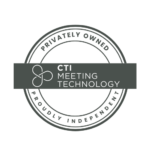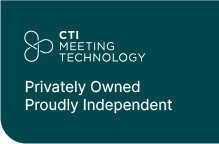The point of organizing a scientific event is to share knowledge and insights. That’s why attendees play such a vital role in the success of conferences. When attendees feel engaged, they are more likely to participate actively, learn, and make meaningful connections with the rest of the participants.
A satisfied movie watcher will leave the theater with a good impression and probably recommend the film to their friends. Event attendees are your most important critics, but they also can bring in valuable referrals and expand the reach of a conference. And obviously, the level of engagement directly impacts overall attendee satisfaction and overall conference success.
Organizers are always looking for ways to make their events better. Keep reading to discover proven strategies to enhance engagement and satisfaction at scientific conferences, ensuring a fulfilling experience for all participants.
1. Understand Your Audience
The first step to maximize engagement is understanding your audience. Segmenting your target audience allows you to identify preferences, interests, and learning styles. A horror movie lover won’t probably be the right audience for a romance movie. Understand what you’re offering to sell to the right audience, and tailor your strategies to their needs and preferences.
By researching your target audience beforehand, you can gather valuable insights into attendee expectations and customize the conference content and activities. If you have the time and resources, conduct a pre-conference survey. Attendees love feeling seen and valued, while organizers can deliver a much better experience with all this data. It’s a win-win situation!
2. Provide Diverse Session Formats
Even though your participants share similar interests, they all preferred learning styles. Not only that, but each format has a different purpose, and using a variety of them can be the key to keeping your attendees engaged throughout the conference.
While traditional presentations are necessary to spread knowledge, interactive workshops might be more effective for an immersive learning experience where all parties can participate and share their insights on a topic. Panel discussions, roundtables, and open forums are also widely used during conferences, encouraging collaborative learning and further discussions among attendees. Offering a variety of session formats ensures that every attendee finds sessions that align with their preferences.
3. Leverage Technology
Event technology can elevate your conference. In today’s digital age, leveraging technology is essential for enhancing engagement at scientific meetings. Tools like polling, networking lounges, or augmented reality experiences hook attendees, helping them explore the conference topics through interaction.
By sharing updates and engaging with participants on social media, you can maximize the reach of your conference, even before and after the event. Leverage event-specific hashtags to keep your audience updated and create a sense of community. As we mentioned in the beginning, the main goal of scientific conferences is to share valuable knowledge and foster meaningful discussions. By facilitating connections between attendees, you foster new synergies in the world of STEMM; these collaborations can extend far beyond your conference.
4. Offer Networking Opportunities
Talking about collaboration, one of the main reasons why people attend these conferences is to meet new colleagues and experts in their industry. Networking is vital to scientific meetings, enabling attendees to connect with peers, researchers, and potential collaborators.
But networking doesn’t mean just putting together people in a venue and hoping they interact with each other! There are tools for pairing attendees with similar interests (think something like Tinder but for professionals) and hosting virtual sessions so remote participants can join.
Aside from that, social events, receptions, and informal gatherings are the perfect chance to network outside formal sessions and share more personal interests and opinions. Don’t forget that engaging and meaningful experiences contribute significantly to attendee satisfaction and encourage future participation. Long story short, keep networking sessions in your mind when planning your event!
5. Embrace Interactivity
Poster sessions are an essential component of scientific conferences. Presenters can share their findings more dynamically while being the perfect chance for attendees to engage with presenters and exhibitors.
Don’t think about posters as just a piece of text with some text and pictures. They can do so much more! In fact, most conferences now have an area dedicated to ePosters – or virtual posters. The advantage of using ePosters during meetings is the opportunity to use multimedia elements such as videos and interactive tools to make presentations more engaging and informative.
Exhibitors and sponsors can also take advantage of event technology. Virtual booths and demonstrations allow them to showcase their products or services, fostering meaningful connections with attendees. It also impacts their reach, as remote participants can visit booths through a virtual platform or in person. Virtual components bring all participants together and close the bridge with remote attendees, so take advantage of this.
6. Engage Your Audience
Live Q&A sessions are highly effective ways that enable attendees to engage directly with speakers and experts, raising questions and contributing to the discussion in real-time. Polling and interactive tools provide an additional layer of engagement, allowing attendees to express their opinions and preferences.
Besides connecting attendees with speakers, these interactive tools provide valuable information for organizers. They help identify common interests, preferences, and the knowledge of your audience. By fostering a collaborative and interactive environment, scientific conferences contribute to starting meaningful conversations and create a sense of belonging among attendees.
7. Include Spaces for Relaxation
Scientific conferences can be intense for attendees. Spending multiple days at a venue, surrounded by people, and attending long and demanding sessions can be mentally challenging for some. As an organizer, guaranteeing attendees’ well-being during the conference is crucial for maximizing engagement and satisfaction.
Small things – including breaks between sessions or incorporating wellness activities and relaxation areas – can go a long way. These activities provide attendees with the opportunity to recharge and destress. They will be thankful to have an area where they can rest after demanding sessions.
Small acts like our above suggestions make participants feel seen and valued, increasing engagement and overall satisfaction. Explore the benefits of incorporating wellness into scientific conferences here.
8. Celebrate Achievements
But the cornerstone of every conference is content. Ideally, organizers research and invite researchers and industry professionals to speak at the event. Usually, invited speakers have some benefits from attending these conferences. On top of that, recognizing outstanding research and contributions is also a great way to foster a culture of appreciation and celebration.
Awards ceremonies and recognition events during scientific conferences not only acknowledge the achievements of individuals; they inspire others to strive for excellence. Not only that, but an environment that values and celebrates success also contributes to increased engagement and motivation among attendees.
9. Follow-Up After Your Meeting
The truth is that engagement doesn’t start and end at the conference. Organizers can create high expectations by posting about key speakers and topics before the event. In the same way, highlights from the conference can be shared once it has finished, fostering further discussions and maximizing the meeting’s reach.
Online platforms can help attendees connect, share insights, further their learning, and facilitate continued discussion and collaboration. For example, by using an event-related hashtag, attendees have no problem finding important information about the conference and other participants, leading to meaningful connections and discussions.
Another way to increase an event’s lifespan is by offering the conference content on-demand. This means recording and uploading all the sessions so attendees can access the recordings afterward at their own pace. This helps accommodate attendees who might have physical or schedule restrictions and helps onsite participants access talks they could not attend or revisit others to reinforce their knowledge.
Take some time to gather attendee feedback as well. Post-conference feedback helps identify areas for improvement and ensures that future conferences continue to meet the needs and expectations of all parties.
10. Offer Personalized Attendee Experiences
Personalization is a powerful tool for enhancing attendee engagement and satisfaction. Organizers can ensure participants experience sessions and topics of interest by customizing event agendas based on audience preferences. And the best part? Thanks to event technology, this can become an automated process.
AI-powered features can offer personalized recommendations and content suggestions based on attendee profiles and previous activities, similar to what streaming platforms do after you watch a few movies. This helps attendees navigate the sessions and select the ones that are more relevant, adding value to the overall conference experience.
Providing options for tailored learning paths enables attendees to create a conference journey that aligns with their specific goals and interests, leading to a more meaningful and engaging experience.
Explore Program Management Software, the easiest solution to simplify and personalize the attendee journey.
11. Foster Accessibility and Inclusivity
Conference organizers are responsible for making scientific conferences accessible to all attendees, regardless of their diverse needs. Think about offering a live stream of the sessions for those who cannot attend in person, virtual networking opportunities to ensure all participants have the chance to connect, and adding closed captions and translations to the recordings for foreign attendees.
Addressing challenges specific to accessibility in virtual and hybrid formats ensures that no attendee feels excluded, promoting engagement and satisfaction for all participants.
12. Innovate and Improve
Organizers are always looking for ways to do better and host more successful conferences. This is why it is so crucial for them to embrace continuous innovation and improvement. Staying on top of technological advancements and exploring their potential for future conferences ensures that conferences remain relevant and impactful. On top of that, there is so much more you can offer your audience!
By creating a feedback loop, organizers can identify areas for growth, inform future decisions, and incorporate attendee suggestions and ideas into upcoming conferences. Who knows? You might even find a successful session theme for your next event by asking your audience.
To Wrap Up…
Maximizing attendee engagement and satisfaction is crucial for the success of scientific conferences. A happy attendee will likely return and recommend the meeting to other peers. As you can see, there are multiple ways in which organizers can help the audience engage with the content, whether by incorporating interactivity tools or offering diverse session formats.
Incorporating these tools helps create an environment that fosters engagement and satisfaction. If you are searching for an all-in-one software solution to increase engagement at your next conference, discover our solutions here.






